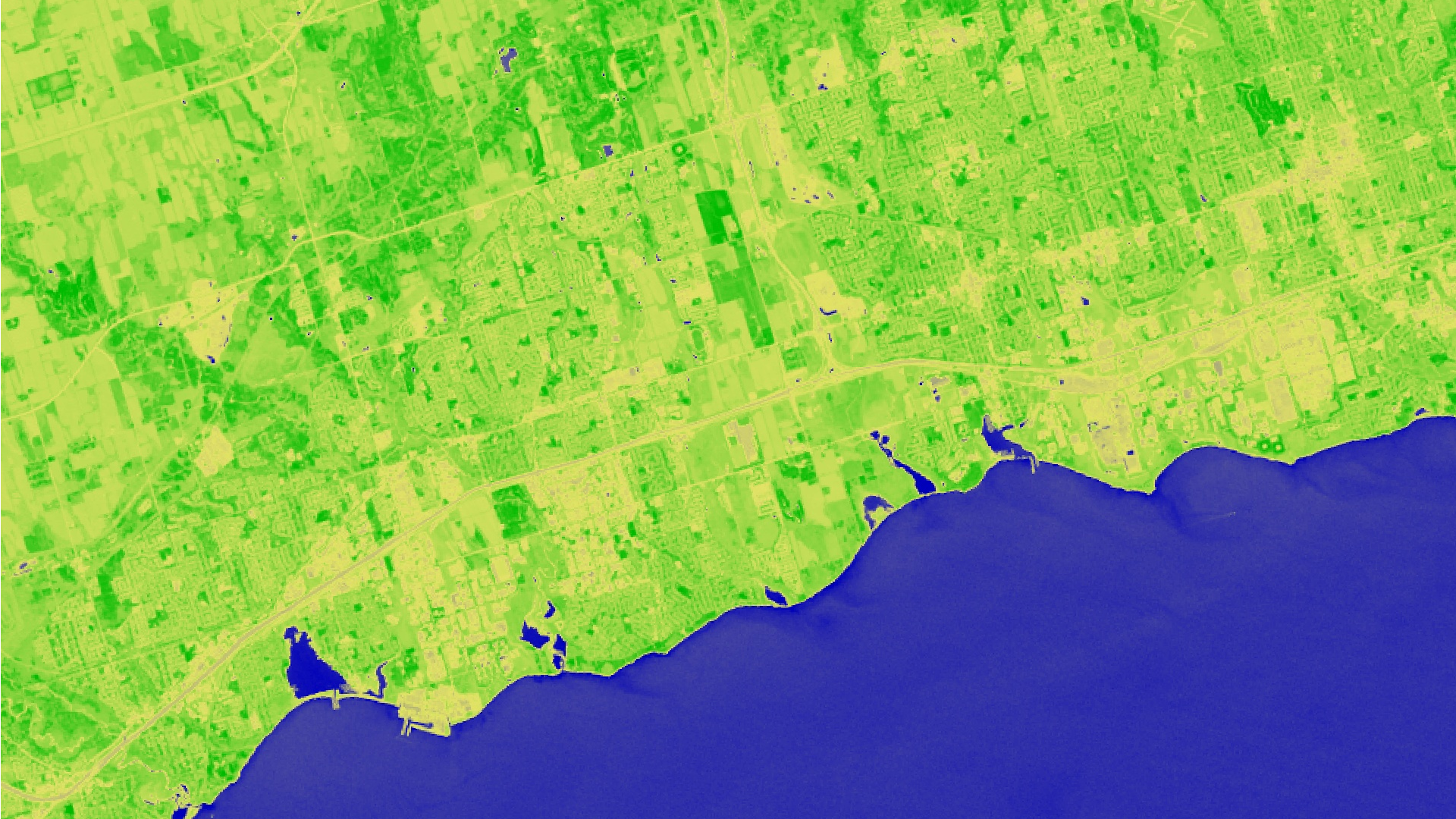Ajax Urban Development

Utilizing NASA Earth Observations to Assess Urban Forestry as an Adaptation Strategy for Extreme Heat in Ajax, ON, Canada
The town of Ajax, Ontario received a report from Specialists in Energy, Nuclear and Environmental Sciences (SENES) Consultants detailing the likely changes in local weather patterns for 2040-2049. The climate model predicts an increase in the frequency and intensity of monthly rainfall, a decrease in annual snowfall, and an increase in average annual temperature of approximately 4 °C. The Town of Ajax, Operations & Environmental Services aims to take early action to mitigate the potential impacts of these changes, such as increased tree fatalities and extreme temperature. In particular, tree fatalities due to increased stress, disease, and infestation are of special concern because trees are an important resource for ameliorating extreme temperatures via shading and evapotranspiration. To create a model for how tree stress varied in conjunction with climate variables, Landsat 5, Landsat 8, and high-resolution imagery from 2000 to 2016 were used to estimate the tree canopy coverage and land cover classes. Combined with meteorological data, these classifications were used to examine the relationship between tree stress and climate variables such as temperature and precipitation. To supplement these results, the group used an ENVI-MET model simulation to perform a case study that determined the optimal tree placement and orientation in a vulnerable residential area within the city. These results will provide city planners with tools needed to plan for the predicted increase in extreme heat events and mitigation of the effects on the community.
Project Video:
Keeping Trees Happy and Healthy
- Location
- Arizona - Tempe
- Term
- Spring 2018
- Partner(s)
- Town of Ajax, Operations & Environmental Services
Great Lakes and St. Lawrence Cities Initiative
Arizona State University, Urban Climate Research Center - NASA Earth Observations
- Landsat 8, OLI
Landsat 5, TIRS - Team
- Huntington Keith (Project Lead)
Eleanor Dhuyvetter
Dean Blumenfeld
Elizabeth Dyer - Advisor(s)
- Dr. David Hondula (Arizona State University)
Dr. Qunshan Zhao (Arizona State University) - Project Materials Poster PDF